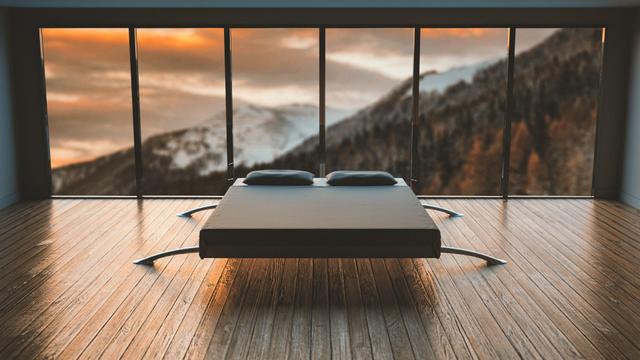Introduction:
Skyboxes play a crucial role in enhancing the visual appeal and atmosphere of a game or virtual environment. Unity, a popular game development engine, offers powerful tools and features to create realistic and captivating skyboxes. In this step-by-step guide, we’ll walk you through the process of creating a skybox in Unity, enabling you to elevate your game’s visuals to new heights.
Table of Contents:
- Understanding Skyboxes and their Importance
- Gathering the Required Assets
- Setting up the Unity Environment
- Creating a Skybox Material
- Applying the Skybox Material
- Adjusting Skybox Properties
- Implementing Dynamic Sky Effects
- Optimizing Skybox Performance
- Testing and Iterating
- Conclusion

1. Understanding Skyboxes and their Importance:
Before diving into the creation process, it’s essential to understand the significance of skyboxes. Skyboxes are essentially textured cubes that surround the game world, simulating the appearance of a vast sky. They can include realistic skies, sunsets, clouds, or even fantasy environments, providing players with a sense of immersion and enhancing the overall ambiance of the game.
2. Gathering the Required Assets:
To begin, you’ll need to gather the necessary assets for your skybox. This typically includes high-quality skybox textures or image files. Numerous online platforms offer free or paid skybox assets that can be used in Unity. Make sure to choose assets that align with the visual style and atmosphere you want to achieve in your game.
3. Setting up the Unity Environment:
Once you have your assets ready, open Unity and create a new project or open an existing one. Ensure you have the latest version of Unity installed to take advantage of the most up-to-date features and enhancements.
4. Creating a Skybox Material:
To create a skybox material, follow these steps:
- In the Unity editor, navigate to the “Project” window.
- Right-click and select “Create” -> “Material.”
- Rename the material to something descriptive, such as “SkyboxMaterial.”
- Double-click on the newly created material to open the Inspector window.
- In the Inspector window, locate the “Shader” dropdown and select “Skybox” -> “6 Sided.”
5. Applying the Skybox Material:
Now that you have your skybox material, it’s time to apply it to your scene:
- Locate the “Hierarchy” window in Unity.
- Right-click in the empty space and select “3D Object” -> “Cube.” This creates a cube object that will act as our skybox.
- In the “Inspector” window, locate the “Mesh Renderer” component.
- Find the “Materials” section and click on the small circle next to it.
- In the pop-up window, drag and drop your skybox material onto the “Element 0” slot.
- Once applied, you should see the skybox material’s preview on the cube object.
6. Adjusting Skybox Properties:
To fine-tune your skybox, you can adjust various properties:
- In the “Inspector” window, scroll down to the “Skybox Material” section.
- Expand the section to reveal various properties like “Tint,” “Exposure,” “Rotation,” and more.
- Experiment with these properties to achieve the desired look and feel for your skybox.
- Additionally, you can change the skybox texture’s resolution or
import custom skybox textures to further customize your skybox’s appearance.
7. Implementing Dynamic Sky Effects:
To add dynamic sky effects, such as day-night cycles or moving clouds, you can leverage Unity’s scripting capabilities. This involves writing custom scripts or utilizing existing assets and plugins from the Unity Asset Store. Dynamic sky effects can greatly enhance the realism and immersion of your skybox, making it more visually engaging for players.
8. Optimizing Skybox Performance:
While skyboxes contribute to the overall visual quality of your game, it’s crucial to optimize their performance impact. To ensure smooth gameplay and optimal performance, consider the following optimization techniques:
- Use compressed and optimized skybox textures.
- Avoid excessively high-resolution textures.
- Limit the number of skybox layers or effects.
- Optimize shader complexity and rendering settings.
- Test your game on different devices and platforms to ensure optimal performance across the board.
9. Testing and Iterating:
After creating your skybox and implementing any additional effects, it’s essential to test your game thoroughly. Playtest your game on various devices and gather feedback to identify any issues or areas for improvement. Iterate on your skybox design based on player feedback and your artistic vision until you achieve the desired results.
Conclusion:
Creating a captivating skybox in Unity is a powerful way to enhance the visual quality and atmosphere of your game. By following this comprehensive guide, you now have the knowledge and tools to create stunning skyboxes that will immerse players in your game world. Experiment, iterate, and let your creativity soar as you design breathtaking sky environments that will leave a lasting impression on your players.
You May Also Like:
Boost Your Productivity with Meta Quest 3: A Comprehensive Guide
How to Use Skybox VR on Oculus Quest 2&3- Your Gateway to Virtual Reality Adventures
How to Get Steam VR Home: A Quick Guide

